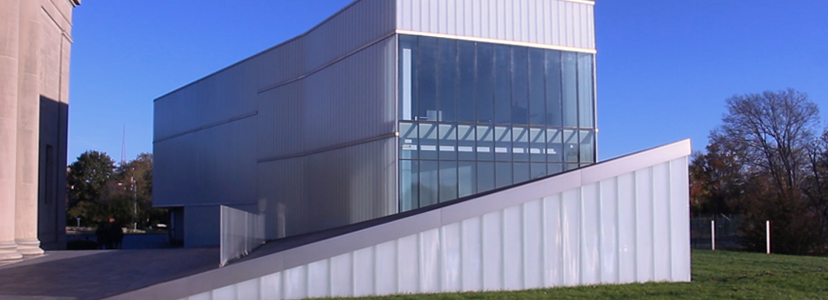
The expansion of the Nelson-Atkins Museum of Art in Kansas City, MO is being lauded by some of the industry’s foremost consultants as the most innovative glazing project in North America today. Five stunning, translucent and transparent glass structures emerge like blocks of ice from the undulating landscape of the museum’s 17-acre sculpture garden. No vertical mullion is in sight. Grid lines run askew. The glass is set from the top and is used in a structural manner. It isn’t framed and is actually carrying its own weight. In contrast to the solid, limestone mass of the original building, these glass buildings bend and refract light, creating a mystical experience for visitors.
Carter Glass Co. was selected to help build what is being classified as the “most difficult and complex” project in the world today.
To avoid disrupting the serenity and monolithic quality of the glass walls, joints needed to disappear. Attention to artistic detail included the development of a clear, hollow-tube backer rod. Between the planks of channel glass, the backer rod was set one-half inch from the face of the glass and the seam was filled with translucent silicone sealant to reduce sightlines. Every couple of weeks new gaskets were developed able to respond to the wind, thermal and seismic conditions of the region where tornadoes and earthquakes are not uncommon. A series of 39 tests took place over a 3½-month period to accommodate wind loads 40-60% beyond any experienced before. Seismic specifications required testing to multi-directional movement of +/-5” in each direction.
Tremco's Spectrem 2 structural silicone sealant was used as a structural and weather seal for the channel glass system. Tremco's Spectrem 1 silicone joint sealant was ideal for use on the most demanding, dynamically moving joints. Proglaze silicone sealant, a one-part,moisture-curing sealant for internal shop installation of okapane insulation and installation of bumper gasket.